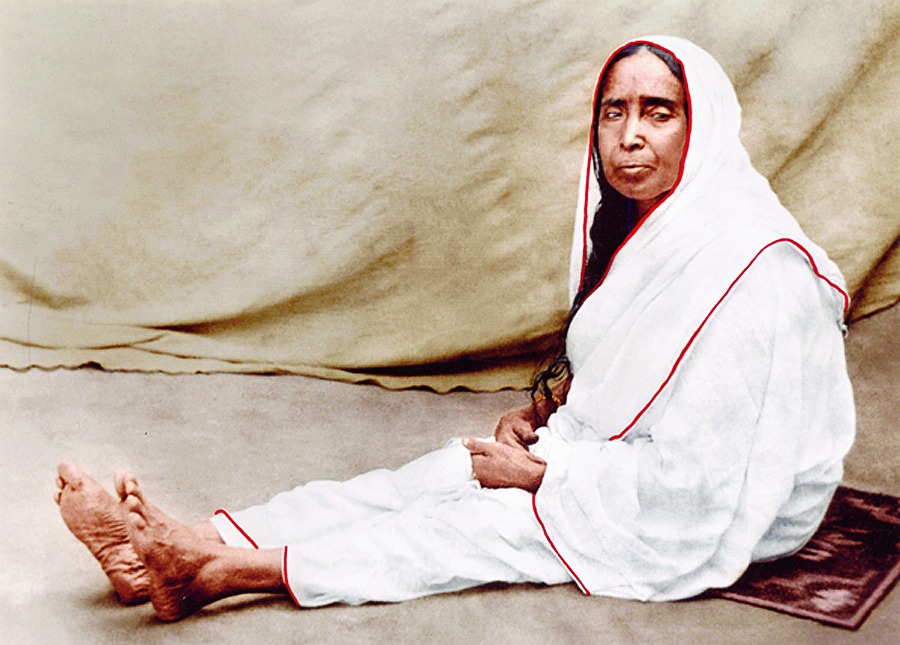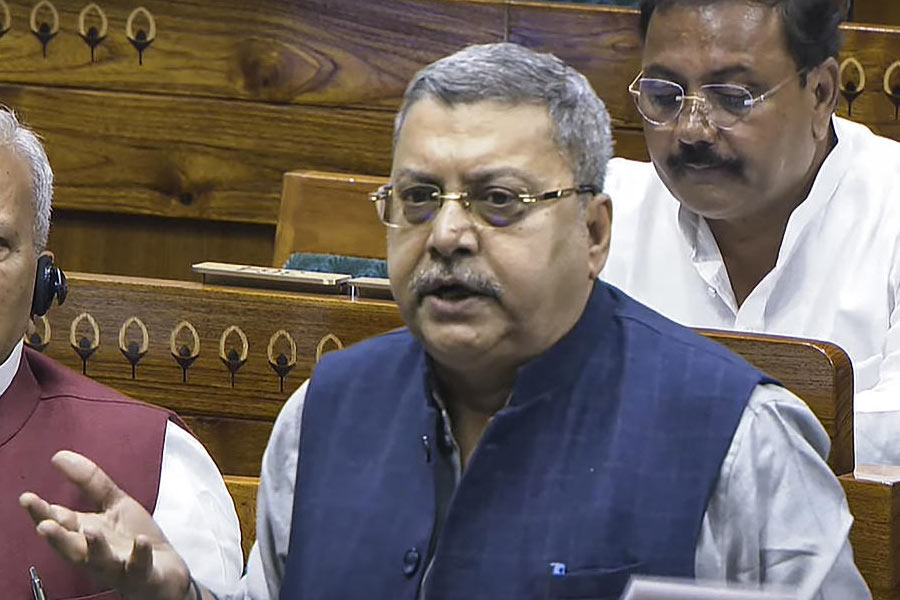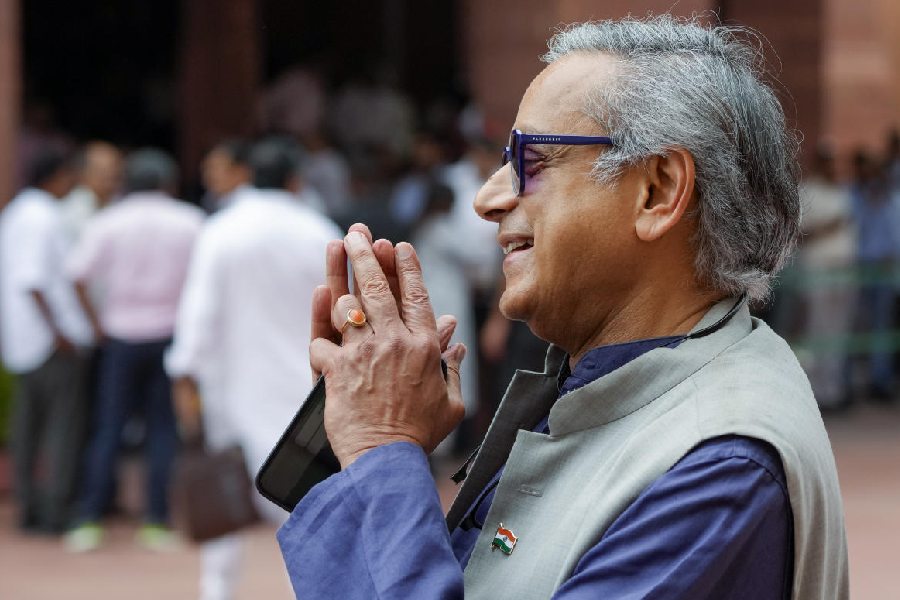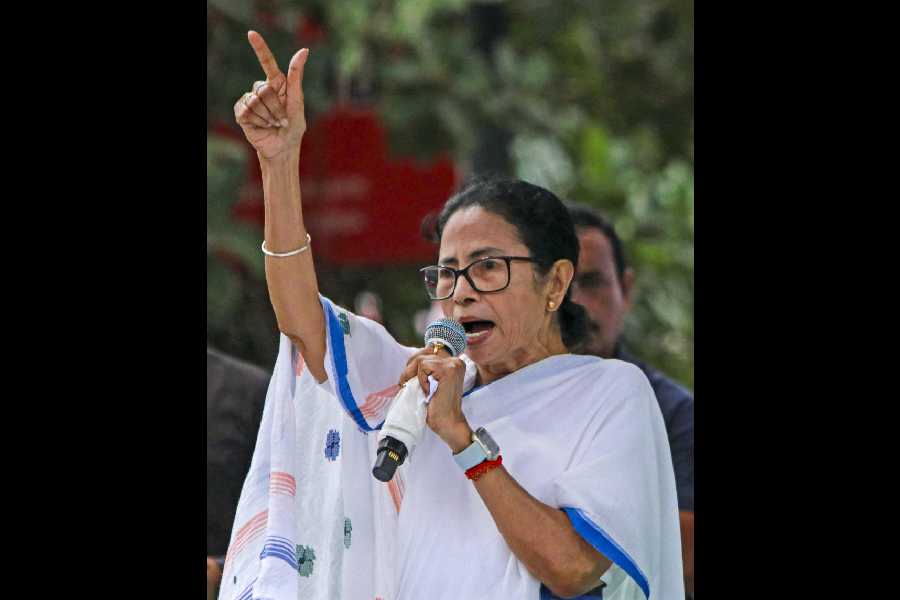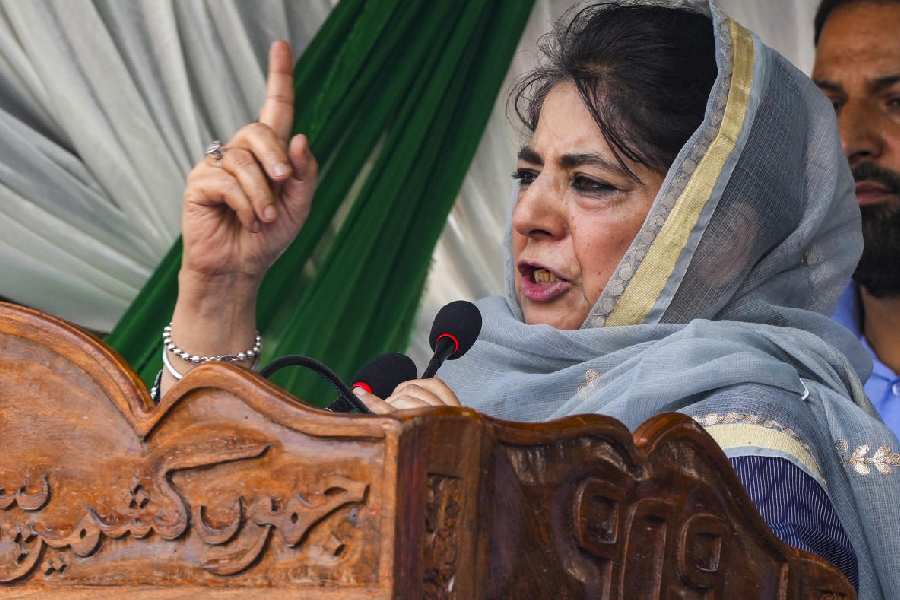
SRI SARADA DEVI AND HER DIVINE PLAY By Swami Chetanananda, Vedanta Society of St. Louis, $39.95
Just as a theatre audience becomes irritated and begins shouting if an interesting drama ends midway, so Swami Chetanananda thought the devoted followers of Sri Ramakrishna and Holy Mother might be annoyed with him if he did not complete the whole drama. Perhaps he also considered that when the Sri Ramakrishna Punthi had been written, Swami Vivekananda objected that it did not mention Holy Mother, so a few lines about her had to be added. Swami Chetanananda's lucid translation of Swami Saradananda's Sri Sri Ramakrishna Lilaprasanga (Sri Ramakrishna, the Great Master) was highly appreciated even after the updated translation by Swami Jagadananda by the Madras Math. Swami Chetanananda's task had been to make a more readable, universal, standard translation, adding pertinent facts and excellent quality photographs. Although there were many source biographical materials available on Sri Sarada Devi's life, it was a herculean task for Swami Chetanananda to compile them and write an authentic biography, combining source materials from no less than 14 books plus many magazine articles. Another reason that this book is so authentic and impressive is that Swami Chetanananda translated Mother's own words as far as possible, instead of paraphrasing them. He did not want to skip even the smallest of details. Rather than interpret them, he has presented all the facts, figures, stories and episodes to the readers to interpret in their own way. Different attendants of the Mother recorded their accounts of her life from their various perspectives and these accounts help us visualize how she lived, worked and interacted with people. In fact, as Swami Chetanananda noted, the details help to make the biography living.
Sri Ramakrishna and Sri Sarada Devi demonstrated the highest truths of Vedanta in their daily lives. Sarada Devi was the mother of everyone without the least discrimination. She said to one disciple after initiating him: "I am no one's guru. I am the mother of all. He is the only guru." The disciple protested, "How can you be my mother? My mother is at home and she is still alive." "I am that mother," she said. "Look at me closely. See whether I am that mother of yours or not." Stupefied, the disciple saw that his biological mother was seated in front of him.
Chetanananda writes: "Holy Mother can no longer be seen with our physical eyes... but we can visualize her divine play in this world by meditating on the reminiscences of her given by those blessed ones who lived with her." In this book are included several appendices from attendants' diaries as well as a complete account of her journeys to and from the villages and Calcutta. There are also detailed maps, the family tree of Mother's descendants, a chronology of events in her life, a glossary and 101 photographs.
We not only read the story of her life again in detail, but also get much more. For example, we learn that "In the 26 years of their married life, Ramakrishna lived with Sarada in Kamarpukur, Jayrambati, Dakshineswar, Shyampukur and Cossipore for a total of approximately 10 years." We also have a description of Mother as the ultimate guiding force of the Ramakrishna Order for 34 years after the passing away of Sri Ramakrishna. She became its spiritual centre. In his last days, he asked her to go on pilgrimage to all the holy places that he could not visit. Later, Yogin Ma, who had accompanied her on these journeys, told Swami Saradeshananda: "Whatever Math and Ashrama centres you see around are the outcome of Holy Mother's grace. Wherever she visited any deities, she prayed with tearful her eyes: 'Master, please create a shelter for my children to live in and arrange a little food for them to eat.' The Mother's prayers have been fulfilled." Sri Sarada Devi and Her Divine Play is a handbook of spiritual practice and a guide to practical living. We learn how to commune with God while living in the world, how to balance activity with contemplation and how to have peace and joy through service and devotion.
Chetanananda notes: "In spiritual life these are the universal and eternal questions: How do I control the restless mind? How do I overcome lust and anger? How do I attain peace and joy? How do I practise spiritual disciplines? How can I see God? What will happen after death? Holy Mother answered all these questions... Her teachings solve our spiritual problems, remove our doubts and create love and longing for God." In this well-arranged book we get clear and practical answers. We also find sequels to many little known events, such as what happened to the extraordinary nun she met in Varanasi who advised Mother to do panchatapa after the passing away of Sri Ramakrishna. One of Mother's attendants (Ashu) went on a pilgrimage to Badarika Ashrama in the Himalayas with another monk. "They first went to Rishikesh and stayed at Kailash Math. One early morning he heard a woman crying pitifully from a nearby cottage. Out of curiosity, he entered the cottage and found a dying woman there. She kept calling out: 'Mother, you have not yet sent your disciple!' As soon as she saw Ashu standing at the door, she said: 'Finally you have come! Please close the door and sit down. Do what I say - there is little time left.' Ashu was dumbfounded. She said: 'Don't doubt me. You can verify this with Holy Mother. She promised that she would send one of her disciples to me during my last moments. Now do what I say: under my pillow are 40 rupees and a notebook. When I die, immerse my body in the Ganges with the help of other monks. Memorize the contents of the notebook within three days and then immersed it in the Ganges. Use the mantras in that notebook for the good of others and never for your own benefit.'"
Ashu ran back to Kailash Math to find his companion. He left a message for him saying that he would not be able to go to Badarika Ashrama and that he should go on by himself. When he returned to the cottage a few minutes later, Ashu saw that the woman's last moments had arrived. She passed away, saying, "O Mother, O Mother." He immersed her body in the Ganges with the help of some monks from the Kailash Math. He then went to Kali Kalmi Baba's ashrama and gave 40 rupees to the abbot there to arrange a feast. He stayed in the ashrama, memorized the mantras in that notebook and then dropped it in the Ganges after three days. "He then returned to Jayrambati and reported the incident to Mother. She said: 'Yes, she made me promise that I would send one of my disciples to her at her last moment. This girl was very good. She knew various kinds of rituals. While I was at Varanasi she used to visit me, and she suggested that I perform the panchatapa.'"
Here we find such little or unknown anecdotes. We had previously read the incident of a European lady who, Rashbehari Maharaj said, had been waiting to see Mother for a long time at her residence in Calcutta. Mother asked him to bring the lady to her. As she bowed down before Mother, she clasped the lady's hand as one does when shaking hands. The woman's daughter was dangerously ill: she wanted Mother to cure her. Mother told her she would pray for her daughter and that she would be cured. Mother gave her a lotus flower from the altar and a bel leaf. After taking them in her own hands she closed her eyes. Then, after looking at Sri Ramakrishna's photo, she gave them to the lady with the instructions to touch them to her daughter's head. The daughter was cured. Mother initiated her. Added to this incident, we find in this book a further detail. The same lady then told Mother that a baby in her house had fever and the lady prayed to God saying, "O Lord, I feel that you exist, but I want an actual demonstration." She kept her handkerchief on the table, in which, after some time, she found three sticks. She touched them to the baby's body and it was soon cured of the fever.
As the author of Sri Sarada Devi and Her Divine Play concludes, "The compassionate Mother left clear and simple directions for us to reach her when we are buffeted by tension and anxiety... when we can find no way out from the turbulent ocean of maya..."
"When Swami Saradananda visited Varanasi after the Mother had passed away, some elderly monks said to him: 'Please write a biography of Holy Mother so that future generations might understand her life correctly. You have performed a great service for the world by writing the biography of Sri Ramakrishna. It would be wonderful if you were to write the Mother's life.' Instead of responding directly, the swami recited this song in Bengali: 'I was amazed to witness the play of the playful Mother,/ But now I wonder whether to laugh or cry./ So long did I live near her and follow her steps,/ Yet I failed to understand, and now acknowledge my defeat,/ Various are her actions in this world, destroying and creating./ All this is child's play to her - this much I have understood.'"

